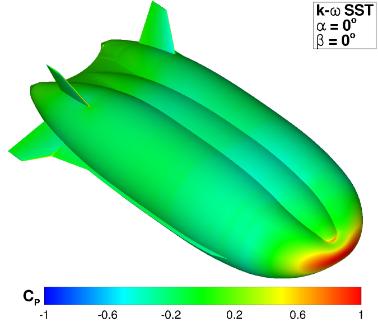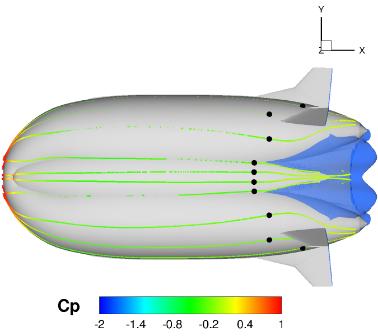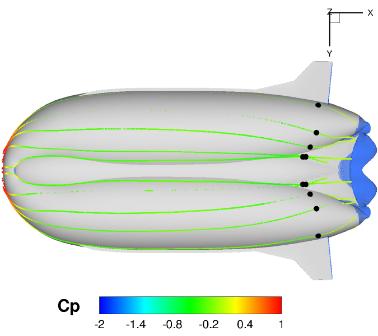CFD for Hybrid Air Vehicles
Within the framework of the LOCATE (LOw CArbon aircraft using lighter than air TEchnology) project, lighter than air vehicles are analysed with CFD.
LOCATE is a collaborative project between Hybrid Air Vehicles Ltd, Blue Bear System Research, Forward Composites Ltd, University of Sheffield, Crandfield University and the University of Liverpool.
Preliminary Results
The Airlander 50 has been first analysed. A fully turbulent case was computed, at wind speed 40m/s and Reynolds number of 3 million, and the wind tunnel dimensions of the model were employed. The following Figure shows a view of the vehicle, coloured with pressure coefficient (Cp).

Michel's empirical transition criterion was employed to estimate the location of the transition onset for the fully turbulent case.The following Figures show the upper and lower surfaces of the vehicle, including streamlines coloured with pressure coefficient and the transition onset points. As can be observed, the flow becomes turbulent from 70 to 80% of the length of the vehicle. Iso-surfaces of negative axial velocity (u=-0.02m/s) are also included, which give information about the region were there is reverse flow.


Contact
G. Barakos (Professor), gbarakos@liverpool.ac.uk
M. Carrion (Research Associate), mcarrion@liverpool.ac.uk
CFD Laboratory, School of Engineering, University of Liverpool, Walker Building, The Quadrangle, Liverpool L69 3GH, United Kingdom